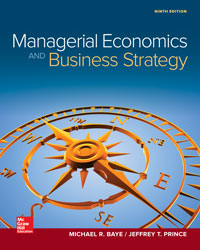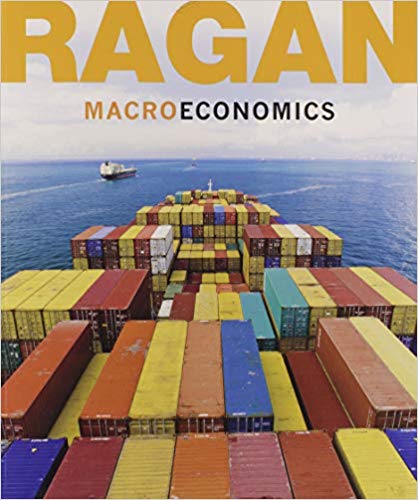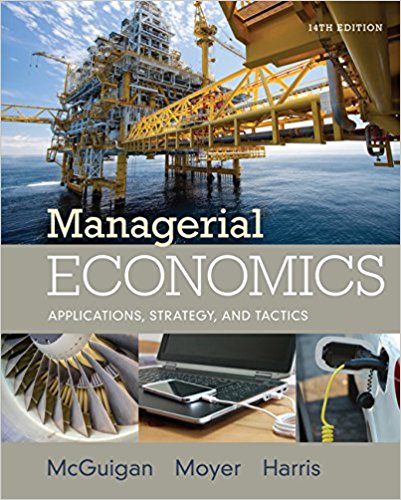Managerial Economics & Business Strategy Michael Baye 9th Edition – Test Bank
Chapter 03
Quantitative Demand Analysis
Multiple Choice Questions
1. Assume that the price elasticity of demand is −2 for a certain firm’s product. If the firm raises price, the firm’s managers can expect total revenue to:
A. decrease.
B. increase.
C. remain constant.
D. either increase or remain constant, depending upon the size of the price increase.
Answer: A
Learning Objective: 03-02
Topic: Own Price Elasticity of Demand
Blooms: Remember
AACSB: Knowledge Application
Difficulty: 01 Easy
2. A price elasticity of zero corresponds to a demand curve that is:
A. horizontal.
B. downward sloping with a slope always equal to 1.
C. vertical.
D. either vertical or horizontal.
Answer: C
Learning Objective: 03-02
Topic: Own Price Elasticity of Demand
Blooms: Understand
AACSB: Knowledge Application
Difficulty: 02 Medium
3. As we move down along a linear demand curve, the price elasticity of demand becomes more:
A. elastic.
B. inelastic.
C. log-linear.
D. variable.
Answer: B
Learning Objective: 03-02
Topic: Own Price Elasticity of Demand
Blooms: Understand
AACSB: Knowledge Application
Difficulty: 02 Medium
4. If the demand for a product is Q xd = 10 − ln Px, then product x is:
A. elastic.
B. inelastic.
C. unitary elastic.
D. Cannot be determined without more information.
Answer: C
Learning Objective: 03-05
Topic: Obtaining Elasticities From Demand Functions
Blooms: Remember
AACSB: Knowledge Application
Difficulty: 01 Easy
5. The demand for good X has been estimated by Q xd = 12 − 3Px + 4Py. Suppose that good X sells at $2 per unit and good Y sells for $1 per unit. Calculate your own price elasticity.
A. −0.2
B. −0.3
C. −0.5
D. −0.6
Answer: D
Learning Objective: 03-05
Topic: Obtaining Elasticities From Demand Functions
Blooms: Apply
AACSB: Analytical Thinking
Difficulty: 01 Easy
6. The price elasticity of demand for apples is −1.2. If the price of apples falls by 5 percent, what will happen to the quantity of apples demanded?
A. It will increase by 5 percent.
B. It will fall 4.3 percent.
C. It will increase by 4.2 percent.
D. It will increase by 6 percent.
Answer: D
Learning Objective: 03-01
Topic: Own Price Elasticity of Demand
Blooms: Apply
AACSB: Analytical Thinking
Difficulty: 02 Medium














Reviews
There are no reviews yet.